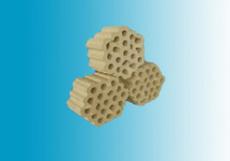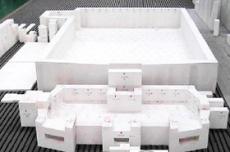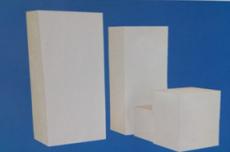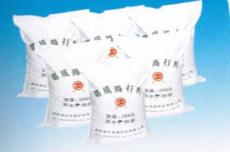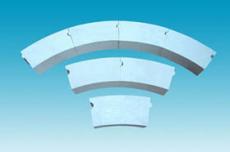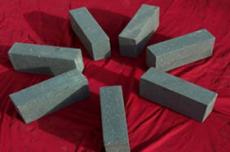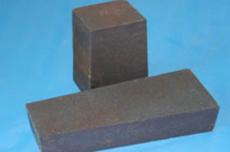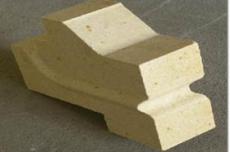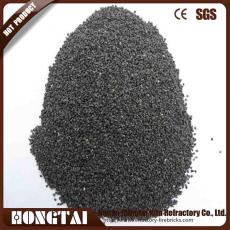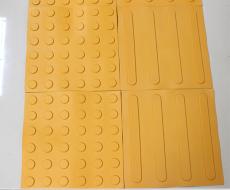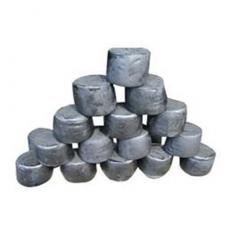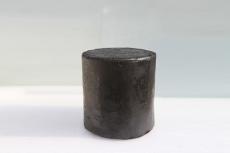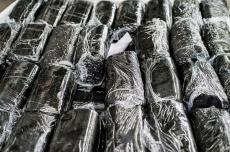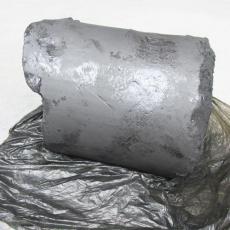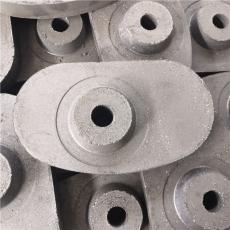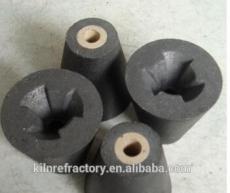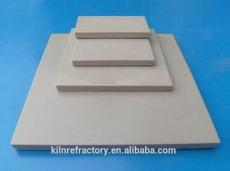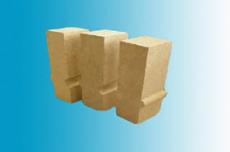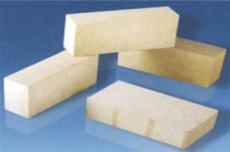
Refractory spray coatings and repair materials are important varieties of amorphous refractory materials. They are a type of material that has developed rapidly in the past decade, and their output is only lower than that of refractory castables. In kilns and thermal equipment, this material can be used to spray new linings or to repair furnace linings. Production practice has proved that this type of material is an effective technical measure to speed up construction progress, shorten furnace repair time, extend the service life of kilns and reduce the consumption of refractory materials. It is a good material with a promising development prospect.
Refractory spray coating
Refractory spray coating is a material that uses a spray gun to spray refractory mixtures onto the sprayed surface, that is, the material constructed by spraying is called refractory spray coating. Spraying is carried out using a sprayer or a spray gun, and is a new process in furnace construction and repairing.
Refractory spray coating uses compressed air or mechanical pressure in the pipeline to obtain sufficient speed, and is sprayed onto the sprayed surface through a nozzle to form a solid spray coating. The spraying methods are divided into three categories: wet method, dry method and flame method; according to the state of the sprayed surface receiving the material, it is divided into two categories: cold material spraying method and molten material spraying method.
Wet spraying refers to the refractory spray material being sprayed onto the sprayed surface after adding water or liquid binder. According to the order of adding water or liquid binder and its dosage, it is divided into four types: mud method, wet method, semi-dry method and pseudo-dry method. Among them, the mixing of two methods is called mixed method. The mud method is to stir the refractory mixture into mud before spraying, which is mainly used for hot spraying furnace lining; the wet method is to stir the refractory mixture into pumpable mud before spraying;
The semi-dry method is to add a small amount of water to the refractory mixture and stir it to moisten it evenly, then transport it to the nozzle and add the remaining water before spraying; the pseudo-dry method is to mix the refractory mixture through a mixer, then transport it to the nozzle and add water before spraying. The last three methods are suitable for spraying furnaces or spraying furnace linings.
Dry spraying refers to the mixing of refractory spray materials directly sprayed onto the sprayed surface through a nozzle, which is mainly used for furnace repair.
Flame spraying uses oxygen to transport the mixed refractory spray materials to the nozzle to meet the combustible gas and spray them together. The combustible gas burns, and the material travels in the flame and melts into a plastic state and shoots onto the sprayed surface. This method is mainly used for hot spraying furnace linings. It has less damage to the original lining, the spray layer is easy to sinter, and the service life is long, but the cost is relatively high. In addition, using a plasma gun to melt or semi-melt the refractory mixture and then spray it onto the sprayed surface and splashing the slag in the furnace with appropriately adjusted composition onto the lining (i.e., the slag splashing furnace protection method) also belongs to this type of method.
Refractory repair material
Refractory repair material refers to the material used to repair kilns and thermal equipment, commonly known as refractory repair material. The material is actually classified according to its use. Its construction methods include spraying, filling, pressing, pumping or grouting. There are many varieties of refractory repair materials, mainly refractory gunning materials, melt-jet gunning materials, refractory throwing materials, refractory pressing materials, refractory pumping materials and refractory grouting materials. This material is mostly constructed by spraying, so it is not included in this chapter, and only important varieties are introduced. Refractory repair materials have excellent performance and are easy to use. They can increase the service life of kilns, increase production, reduce costs, and have significant economic benefits. Therefore, in recent years, refractory repair materials have developed rapidly, and their output far exceeds that of refractory spray coatings. Among refractory spray coatings and refractory repair materials, many materials are universal, but the construction methods are different and their names are different. For example, mud spray coatings and refractory grouting materials, refractory gunning materials and throwing materials, etc., have basically the same composition and performance, but the construction methods are different, and the names are also different. The material composition of refractory spray coatings and refractory repair materials is basically similar to that of refractory castables of the same type. The difference is that the critical particle size of refractory aggregates is smaller, generally 3 to 5 mm, and the combined amount of refractory powder, ultrafine powder and binder is larger, generally 35% to 45%. Due to the similar material composition, the coagulation and hardening mechanism of this type of material and the physical and chemical changes at high temperature are also basically similar.
The technical key of refractory spray coatings and refractory repair materials is mainly adhesion, adhesion, strength and sintering. This is also the basic characteristic that the material should have, otherwise the service life of the spray coating and repair layer will be reduced. This characteristic is closely related to the material itself, and more importantly, it is restricted by the spraying machine and other machinery and construction process parameters, and is also affected by factors such as the state and use conditions of the sprayed body. These restrictive and influencing factors are the basis for selecting refractory spray coatings and refractory repair materials, and are also the key links to obtain good spraying or repairing layers. Therefore, it should be reasonably selected, carefully adjusted, and strictly controlled.
